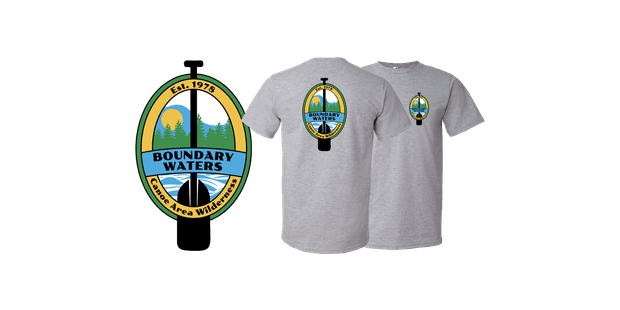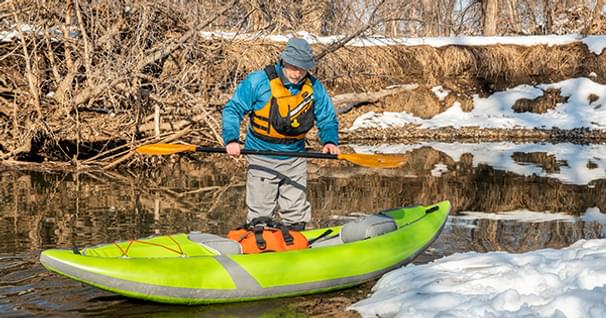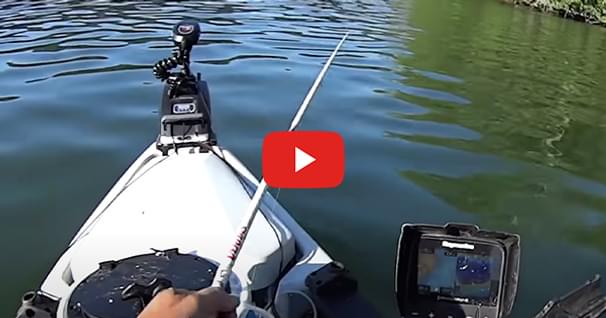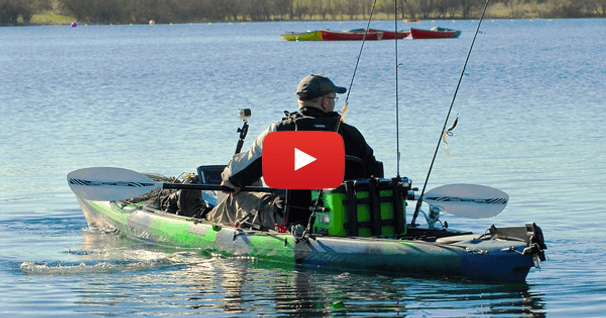How to Navigate Rapids
Follow Jim Baird as he explains his risk management when paddling rapids, asking himself the question, "Do I shoot, line, wade or portage?"
It's your fourth day of just rain, rain, rain. After two days you start to feel a little down, everything is soaked, you're uncomfortable, you're freezing cold. After three days you're like "Okay, that's enough," and when it keeps going for half a day more, you're like, "Oh my God, the world is ending."
~Get the BWCAW Tee~
With over 1,090,000 acres of wilderness area, the BWCAW is a paddler's paradise.
Shoot, Line, Wade
Now I want to talk about SLW: Shoot, Line, Wade, okay?
- Shoot - When you come to a rapid you kind of shoot it, which is run it.
- Line it - Which is to walk the boat down, well you stand on shore on the end of ropes.
- Wade - And wade is where you hold onto the boat and walk down in the rapid. And anything can be portaged.
So, any rapid, when you get up to one, first, you scout, okay? Then you decide do I shoot, line, wade and if you can't do any of those then you portage. It should be SSLWP. A lot of the times you see a rapid you can run but, you don't know what's around the next corner, it could be a waterfall, topo maps aren't always right. So, it's a smart idea to just wade it or line up to the next obstruction to see what it is on a blind corner.
When you are lining a rapid you want to make sure that your rope is coiled properly in your hand. As you coil it make sure that the ropes stay on top of each other and beside each other so they don't get all mish-mashed because that can cause tangles and they can cause a lot of problems.
That "P" is a "P" for portage. I just finished a portage around a fall, and I scouted this big rapid and it looks like I am going to decide to shoot, which is "S".
This next one, I am going to line.
Finally, we have some sun, yes! We're coming up to a nice drop right now, it's not a big drop but it is not far away from a portage, which is a waterfall. So, you want to use extra caution. That is going to be my entrance point to the rapid, that tongue, then I'm gonna get right to avoid a large hole and eddy out left. That's what you want to go for, you want to aim for a spot the water pushes through and try to guide your boat that way.
This video is Episode #11 of a great series by Adventurer Jim Baird that follows him on his solo journey down the Kesagami River in Northern Ontario.
Related Articles
Flexibility is always a good topic of discussion when it comes to kayaking. Depending on our style of…
Kayak Catfish does some trolling with crappie magnets to catch some catfish bait.
How many of you have ever heard that paddle craft (vessels under oars according to the Navigation Rules)…
More times than not, the reason you aren't catching big fish is not because you aren't doing enough…




